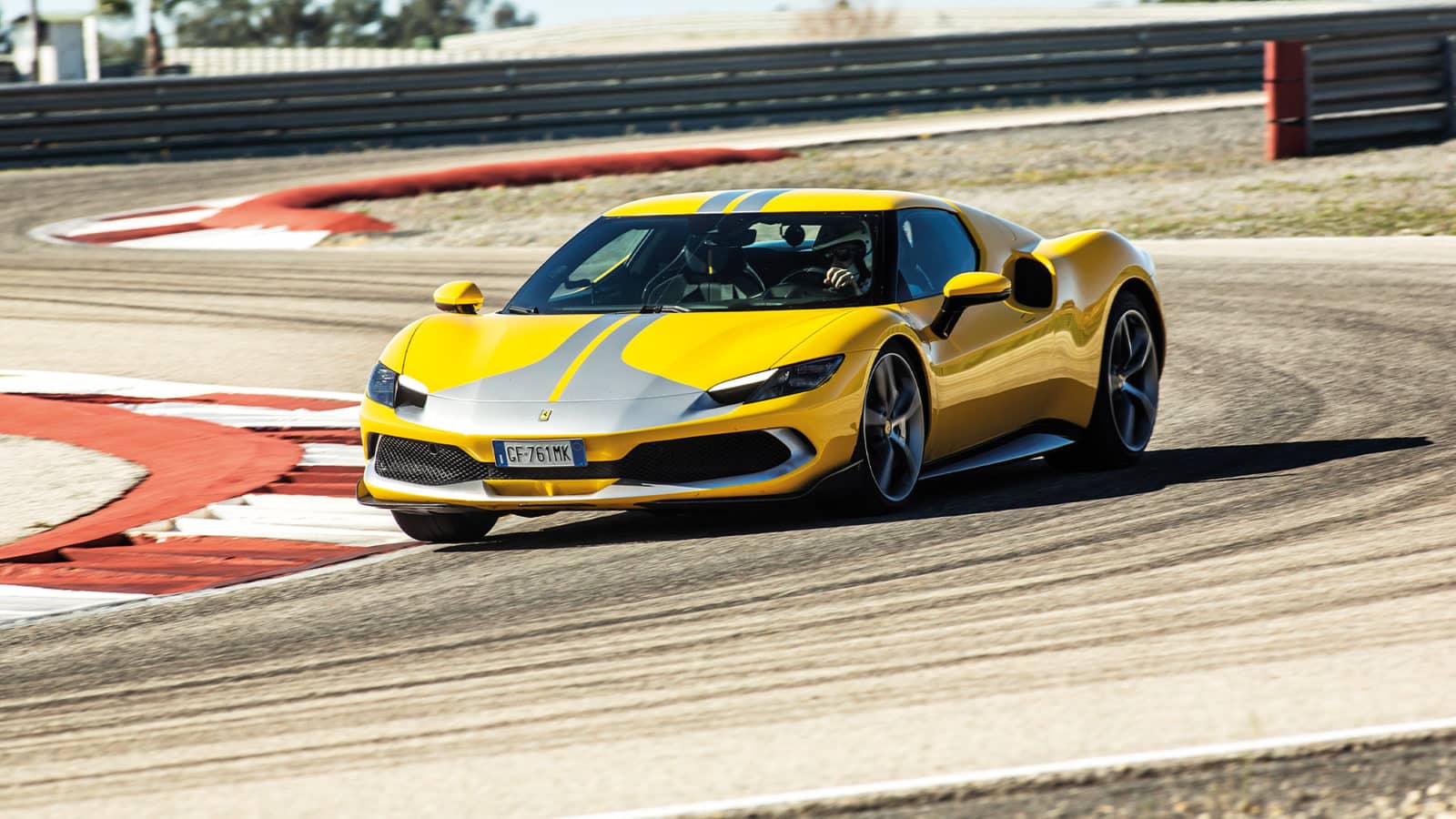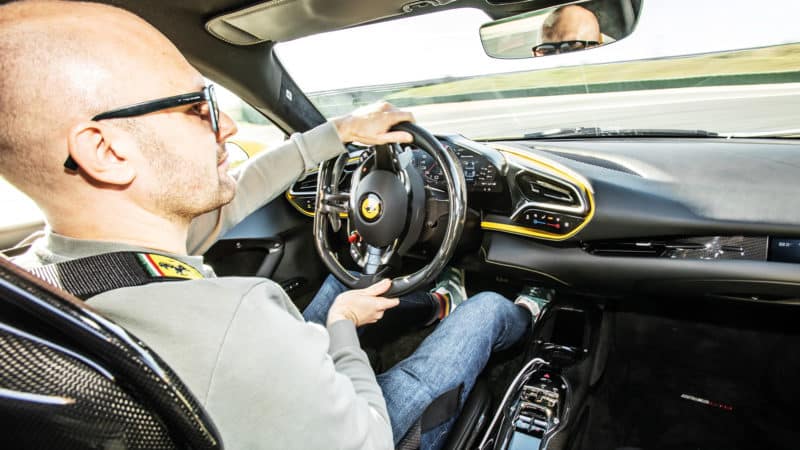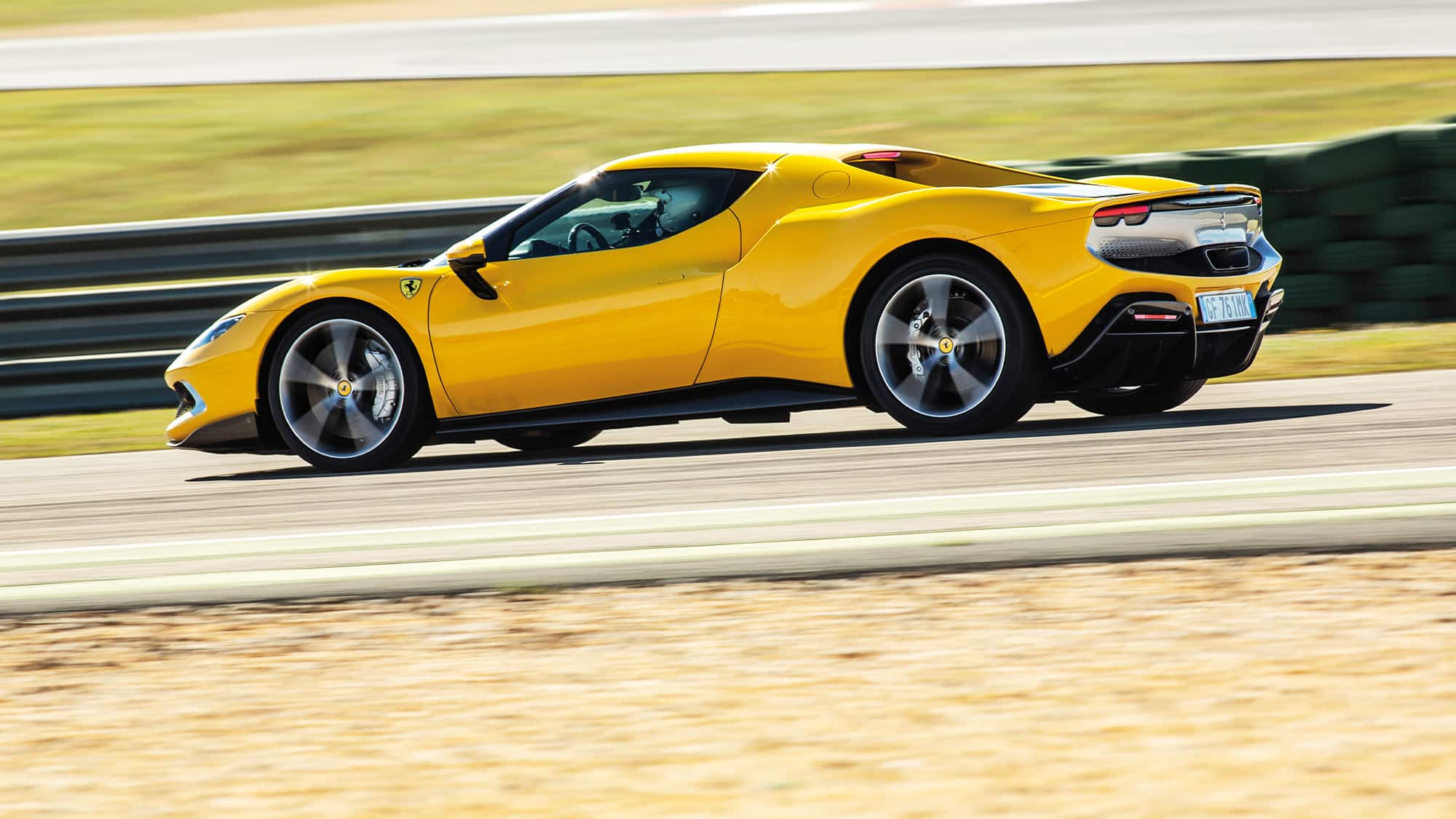2022 Ferrari 296 GTB review: Maranello's volts face
Hybridisation has trickled down the Ferrari range, writes Stephen Dobie. Performance like this was once the reserve of hypercars

Equine as mustard: with its clean lines, the 296 GTB is said to reference Ferrari’s 1960s sports cars... But is that to keep the traditionalists happy?
As it presents its latest hybrid supercar, Ferrari keeps mentioning the 250 LM. A fair chunk of the 296 GTB’s aesthetic has been influenced by the 1965 Le Mans winner, not least the ‘flying bridge’ aft of the roof, part of a phenomenal piece of aerodynamic work that’s allowed the design team to minimise the glass engine cover to benefit engine cooling.
I think it’s a tad unfair to hark back to the 1960s, though, because the 296 can surely gain some icon status all on its own. Perhaps it’s all simply an insurance policy for the marketeers, worried that there will be a braying mob of traditionalists deeply upset by Ferrari ignoring a V8 in favour of an electrically boosted six.
The 3-litre V6 in question is all new, angled at 120 degrees with a turbo on each bank inside a ‘hot-V’ layout. If its 654bhp output wasn’t exciting enough, the delivery of peak power at 8000 revs ought to prick your neck hairs up. Its rev limit isn’t far off Ferrari’s recent non-turbo engines, with a soundtrack almost to match; Ferrari’s own engineers nicknamed it ‘piccolo V12’ in development.
It’s joined by a 165bhp electric motor and unlike the SF90 Stradale, everything powers the rear axle, making this the first RWD plug-in hybrid to wear a Prancing Horse. The battery takes two and a half hours to fully charge on a home wall box and provides up to 16 miles of emissions-free range, the car always starting in e-mode to allow slinky getaways from home in the early hours. Neighbours will be delighted.

With a 50mm shorter wheelbase than the similarly priced F8, you’ll find the cornering is keen
Total output depends on your drive mode, the handling manettino joined by other buttons – well, a glossy touch-sensitive surface – on the other side of the steering wheel. ‘Qualify’ serves up the full 819bhp for when you want to replicate Ferrari’s 1min 21sec lap of Fiorano, which is a mere 1.3sec off its first production hybrid, the £1m LaFerrari. At £241,550 (before options), the 296 essentially proffers hypercar performance for a fraction of the price.
You can lose another 0.5sec by upgrading to Assetto Fiorano spec (£25,290) which brings track-focused but road-legal Michelin Cup2R tyres as well as sharper dampers, lightweight interior and exterior components and the option of a livery that harks back to the 250 LM.
Moving from V8 to V6 saves around 30kg, going some way to negate the extra weight of the hybrid components. The end result is a 1470kg total before fluids, which is over 100kg stockier than an F8 Tributo – a car that, for now, the 296 doesn’t directly replace. There’s a wealth of other technology I could fill every page of this magazine describing, but among the more interesting highlights is ‘ABS evo’.
A new brake-by-wire system aims to cut pedal travel beyond what’s possible with a hydraulic set up while encouraging the driver to really indulge in late, trailed braking, much in the way Side Slip Angle Control cajoles even the most reserved drivers into chasing oversteer.
On track, both systems combine to draw an almost animalistic level of commitment right from the end of your warm-up lap, the car’s stability under even the most binary of braking inputs astounding. But I think I’m even more impressed out on the sinuous hills above Circuito Monteblanco. I’ve rarely considered myself a fearless late-braker, but the 296 almost punishes prudence – you’ll slow too early and enter a corner tentatively feathering the pedals. Better to elevate to its level and push the car harder than an 800bhp slice of exotica has any right to encourage.

Among the key dynamic differences over the F8 is a 50mm-shorter wheelbase, and the result is a car that slices into corners with absurd keenness. But learn its ways, loosening the ESC to its goading ‘CT Off’ mode as conditions allow, and you’ll have a dropped jaw and a big grin all at once.
There’s a notable amount of regen built into the brakes which can’t be adjusted or turned off – “we always want to recover the maximum energy possible”, says an engineer – which means even when you’re indulging yourself, the battery’s charging in the background.
I support enthusiast car brands making electrification work this well, and in many classes of car I’d now default to an EV. Yet I find myself sparking the V6 into life when not strictly necessary; Ferrari’s intensive exhaust work has paid off and I’d be doing a sad disservice to the schoolkids of Spain if they snapped their necks to see a brightly hued Berlinetta only for it to swish subtly by. I’ll also admit to wondering what the 296 might feel like sans batteries, a 1.3-ton sports car with zero complication.
It wouldn’t be as brutally quick, mind; the 296’s acceleration feels as relentless as a full EV’s, exhibiting a wallop of torque at every bit of the rev range thanks to the combination of e-boost, turbos and that sky-high redline. I’m pulling the paddle in such quick succession,
I audibly praise Ferrari for fitting sprint-like gearing… before eyeing the number on the speedometer and realising maybe those eight ratios aren’t so short after all. The car surges to 8500rpm with ferocious abandon. Rarely do turbo power units encourage such aggressive use of their entire rev range.
Without the extra weight of hybridisation, perhaps there wouldn’t have been such a rethink of the 296’s other components, too. How Ferrari has fitted so much advancement into one car is hard to fathom. Despite the work that’s been poured into the hybrid set up, my abiding memory – and the thing that dragged out a commitment level I’d not previously mined – is that trick braking system. Test driver Marc Gené is similarly enamoured, claiming he’s never driven a Ferrari road car that behaves so much like its race cars. Perhaps those 250 LM references weren’t so unfair after all.
2022 Ferrari 296 GTB statistics
Price £241,550
Engine 3 litres, six cylinders, twin-turbo, petrol, e-motor
Power 819bhp at 8000rpm
Torque 546lb ft
Weight 1470kg
Power to weight 557bhp per tonne
Transmission Eight-speed twin-clutch, rear-wheel drive
0-62mph 2.9sec
Top speed 205mph
Economy N/A
CO2 149g/km
Verdict A bombastic hybrid supercar
